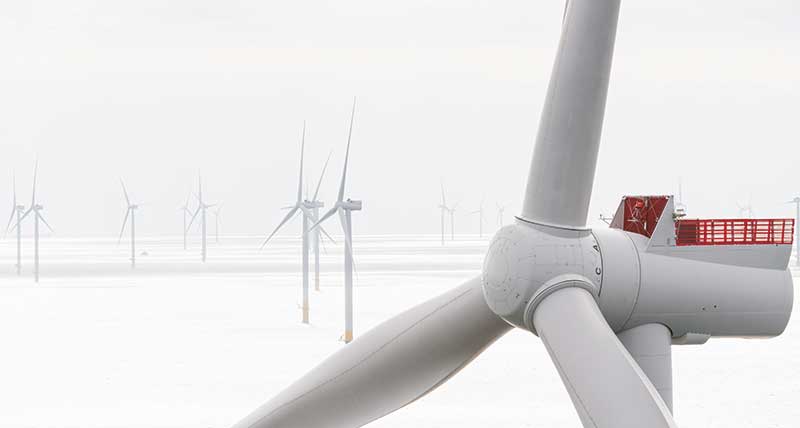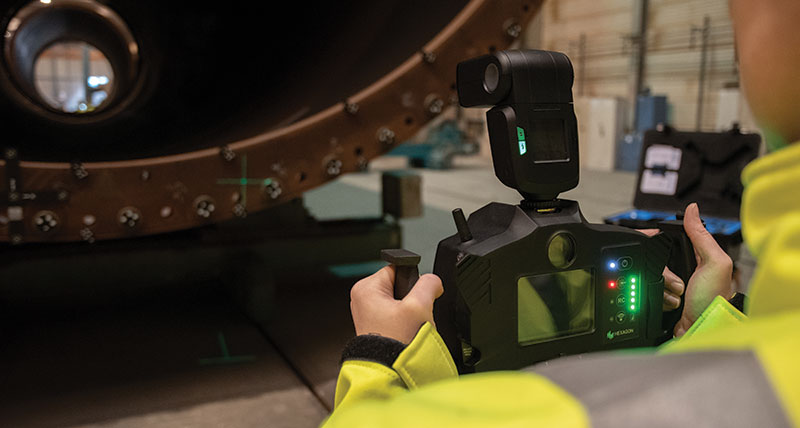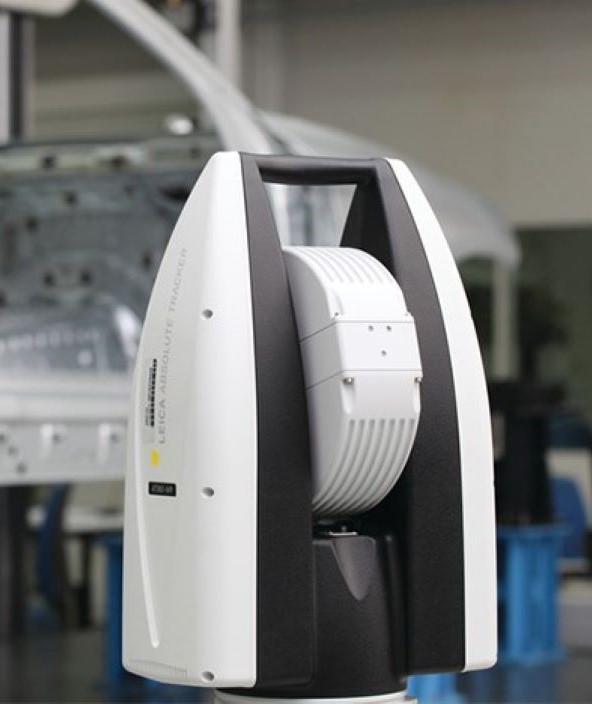Breaking new ground in metrology-assisted assembly
by Andreas Rietdorf
Contact us

Over the last few years, I’ve had the fortune to take part in a very interesting project with wind energy behemoth Siemens Gamesa. It involved finding a solution for the measurement and alignment of the large stators used in the wind turbines the company was producing from its factory in Cuxhaven in northern Germany.
The project really started with the involvement of Marius Fuerst-Sylvester, Calibration Engineer on the Offshore Operations team at the Cuxhaven site. Marius has been at Siemens Gamesa since around 2017, although his metrology experience goes back much further. He has a very long history of working with photogrammetry and structured light scanning systems, and he in particular has had a lot of experience working with Hexagon’s DPA Series photogrammetry solutions.
Marius was in fact instrumental in transitioning the Siemens Gamesa site in Cuxhaven to our DPA Series photogrammetry technology as soon as he joined the team, driven by his previous good experiences with the system and his good relationships with people at Hexagon. That introduction of Hexagon photogrammetry technology at Cuxhaven is that led to our team being very familiar with the site, the project team and the applications that were important for them.
So the genesis of this project was in 2018 when Marius called me with an idea. He got straight to the point and told me he wanted to have a dynamic measurement system in combination with an absolute measurement device that would allow him to measure and correctly align these huge stators as they were being installed. I was aware of the system they were currently using, which was two mobile photogrammetry systems from our DPA Series, and he explained how this made for an extremely slow process with many opportunities for operator error.
His goal was to build on the positive aspects of the photogrammetry system they had in place by introducing a coordinate system that would aid alignment and an automated element that could further improve productivity. While this whole idea was somewhat “outside of the box”, within that context it seemed to me that a laser tracker would be the “obvious” technology to somehow add into this system to deliver the absolute positioning component. But this was something we had certainly never done before at Hexagon, and there were no existing plans to develop any such a system within the company.
I put Marius in touch with our business development team to discuss the possibility further, and to be honest I didn’t expect to hear anything more about the “project” for months, if ever again. But one day later I get another phone call, this time from my colleague Timo Dillemuth in Product Management and Business Development. He had already spoken with Marius at Siemens Gamesa and was really excited about the idea. It was well-suited to our goal of developing metrology-assisted assembly technologies, and the business was aware of the release of a competitor product for similar applications that operated without a laser tracker component. All that meant we had the green light to go ahead and start thinking about the realities of such a system.
We initially had the idea to put two MoveInspect XR8 systems together, perhaps a rail, put some targets behind it and track these targets with a laser tracker. But the dimensions of the stator don't fit within the field of view of the XR8 system – we needed something bigger.
In the preceding five or six years, we had developed several photogrammetry systems for the aerospace industry in Germany which were constructed using cameras mounted on a custom-designed carbon fibre reinforced polymer (CFRP) frame. This seemed like the perfect solution – the custom frame size allowed us to build a system with the larger field of view Siemens Gamesa needed, while we already knew that the CFRP construction would deliver the rigidity needed to guarantee reliability over that increased size.
We took these rough ideas to a kickoff meeting in Cuxhaven in June 2019. I prepared some slides with really nothing more than an idea at that point, along with a very basic sketch that had just been drawn by hand on my tablet. And that idea, with a few modifications, was essentially the system that we eventually produced, which involved rotating the stator in front of a fixed frame mounted with cameras and a tracker to align the measurements within a coordinate system created by a constellation of mounted wide-angle reflectors – a hybrid technology solution that we believe is the first of its kind. You can read some more details about the project here.
And that was how it started – six months later the project was agreed and we started developing our prototypes. Now here we are in 2021, and despite all the upheaval of the last year, the finalized system is installed and operational in Cuxhaven, with very positive results so far.
I think what was important in getting this project off the ground and making it a success were the strong and positive interpersonal relationships between team members here at Hexagon and at Siemens Gamesa in Cuxhaven. And just as vital was the very good understanding on Marius’ side of the advantages of basing the system on photogrammetry, and of exactly what we could and couldn’t do with our technology.
What we ended up with is a really nice system. The photogrammetry technology, used in combination with the laser tracker, creates a perfect measurement system for this type of application. We can measure multiple points at the same time, allowing us to perfectly align these large flexible stator components within the global coordinate reference system provided by the tracker and reflectors.



